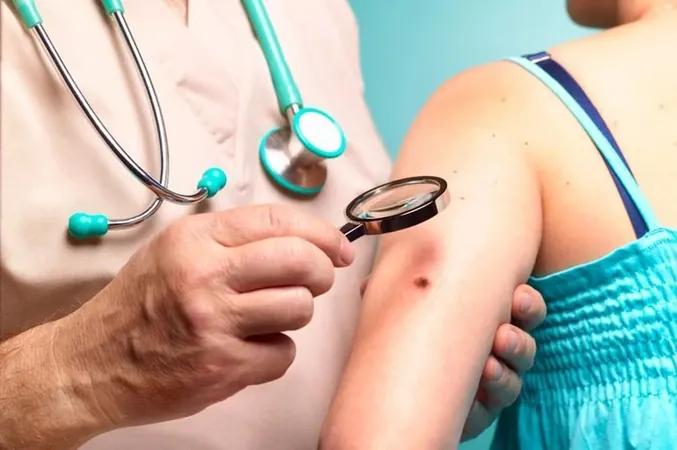
Is Your Mole Changing? Time to See a Dermatologist!
2025-09-03
Author: William
Understanding Moles and Melanoma Risk
By the time we reach adulthood, most people have between 10 to 40 moles scattered across their skin. These tiny growths can be round or oval and range in color from pink to brown or black. Generally, they are harmless, but there's a critical reason to pay attention to any changes.
Abnormal moles can signal melanoma, a rare yet lethal type of skin cancer. Act fast! Melanoma often appears as a new lesion, particularly on the chest and back in men or the legs in women.
The Importance of Early Detection
The silver lining? Caught early, melanoma is treatable. Dr. Darrell S. Rigel, a leading dermatologist, emphasizes that early-stage melanoma can often be removed simply, leading to positive outcomes.
However, if melanoma spreads, survival rates plummet to under 50%. This cancer has a penchant for spreading early, making vigilance paramount.
Know Your Risk Factors
Several factors increase melanoma risk: excessive sun exposure, indoor tanning, atypical moles, and family history. It's more prevalent among those with fair skin, light hair, and light eyes. Interestingly, while people of color are less likely to develop melanoma, they face higher mortality rates should it occur due to inadequate awareness.
Spotting the Red Flags: The ABCDE Rule
How can you determine if that mole needs a check-up? Follow the dermatologist-approved ABCDE rule: - **Asymmetry:** If you draw a line through the mole, the halves don’t match. - **Border:** Look for irregular edges that are notched or blurred. - **Color:** An uneven mix of shades, including reds, browns, or even blue or white, is a warning. - **Diameter:** If it’s bigger than a pencil eraser (1/4 inch), take note. - **Evolving:** Any change in size, shape, or color warrants a visit.
Dr. Rigel encourages everyone to keep an eye on their moles: “If anything looks unusual—growing, bleeding, or changing—get it evaluated.”
Performing Regular Skin Checks
Regular self-exams can be your first line of defense. Look at your entire body, including hard-to-see areas like your back and scalp, and make sure you monitor moles closely.
What to Expect at the Dermatologist
If you spot something suspicious, your dermatologist will inspect it closely using a special magnifying tool. If necessary, they may perform a biopsy, which is typically a simple procedure.
Tips for Skin Cancer Prevention
To reduce skin cancer risks, seek shade during peak sun hours, apply broad-spectrum sunscreen (SPF 30+), and wear protective clothing. Don’t hesitate to consult with a dermatologist if you have concerns.
Remember, a quick visit could save your life. Most check-ups return a positive outcome, but if it’s something more serious, early action is crucial. Stay vigilant!









 Brasil (PT)
Brasil (PT)
 Canada (EN)
Canada (EN)
 Chile (ES)
Chile (ES)
 Česko (CS)
Česko (CS)
 대한민국 (KO)
대한민국 (KO)
 España (ES)
España (ES)
 France (FR)
France (FR)
 Hong Kong (EN)
Hong Kong (EN)
 Italia (IT)
Italia (IT)
 日本 (JA)
日本 (JA)
 Magyarország (HU)
Magyarország (HU)
 Norge (NO)
Norge (NO)
 Polska (PL)
Polska (PL)
 Schweiz (DE)
Schweiz (DE)
 Singapore (EN)
Singapore (EN)
 Sverige (SV)
Sverige (SV)
 Suomi (FI)
Suomi (FI)
 Türkiye (TR)
Türkiye (TR)
 الإمارات العربية المتحدة (AR)
الإمارات العربية المتحدة (AR)